Braai is a distinct South African method of barbecuing meat. It’s a South African equivalent of barbecue characterized by its unique rules and etiquette. One of these rules involves using local wood, which imparts a distinctive flavor to the Braai BBQ. Comparing a braai to an ordinary barbecue is considered a faux pas in the rainbow nation. It’s a big no-no!
The South African Braai has held a special place among my favorite outdoor cooking experiences since I participated in a traditional Braai Day firsthand in 2017. For passionate grillers, the experience of a Braai event ignites a true sense of enthusiasm. If you’re open to trying new culinary experiences, this is bound to captivate you. In this article, I will provide a comprehensive understanding of the Braai, its associated dishes, and the essentials you need to grill using this method.
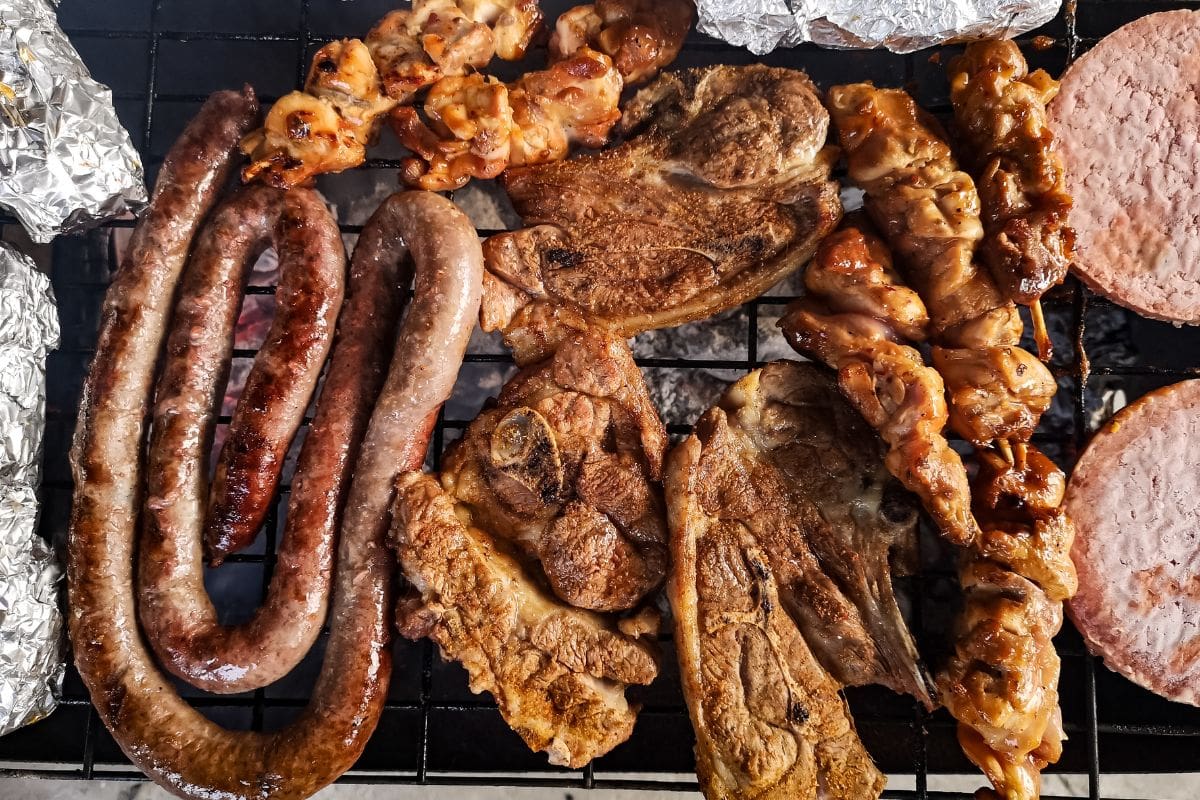
The term ‘braai’ is derived from the Dutch word for ‘Braden’ from the Afrikaans language and means ‘roast.’ It carries other meanings. On the one hand, South Africans might call the grilling apparatus itself Braii. On the other hand, it signifies a BBQ meal prepared over an open fire. Beyond this, Braai represents a genuine way of life of South Africans – a social event that spans various occasions.
Whether it’s a business function, a birthday celebration, or a leisurely Sunday afternoon gathering with friends and family, South Africans always find reasons to braai. This South African cuisine is particularly vibrant during the extended summer months, from October to February. It’s a bit like Australian or American BBQ practices. But South Africans hold theirs a bit more in high esteem.
Due to braai’s significant role in South African culture, nearly every household possesses a braai grill, bowl, or pit. It’s typically located on the porch or in the garden. Many South Africans even have braai rooms in the form of open indoor fireplaces or fire bowls. It’s important to note that these should not be confused with the fire plate grills prevalent in other regions.
Above the grill, you’ll find either a braai grate or a fire pit grill – essentially a grill grate elevated on support legs. However, braaiing isn’t confined to homes and gardens; it takes place on sidewalks, beaches, stadiums, and virtually everywhere.
This tradition thrives in both black and white South African cultures. It transcends mere BBQ. It embodies a cultural movement in the land of iSewula Afrika and it’s made its way to Australia and Europe and already extending its influence to the Americas.
Whether you’re using a traditional South African fire pit or a ready-made grill, the crucial factor is using only wood embers to heat the grilled food or meat. Using or adding charcoal or briquettes is not acceptable. But some South Africans grill with charcoal sometimes. Gas grills are not used in real braai.
Lamb chops or beef steaks are popular Braai meats. But you can experiment with typical South African meats like buffalo or ostrich. Chicken kebabs are pretty popular too. So is beer can chicken for those who want something from a whole chicken.
Again, you need a fire bowl or pit, and, of course, a grill grate for holding the food. A fire bowl can serve the purpose well. It’s ideal for a convivial braai, as the charming iron or steel grill vessel imparts a beautiful ambiance on the terrace or lawn. Atop it, you place a fire pit grate. It’s essentially a grill grate raised on supporting legs.
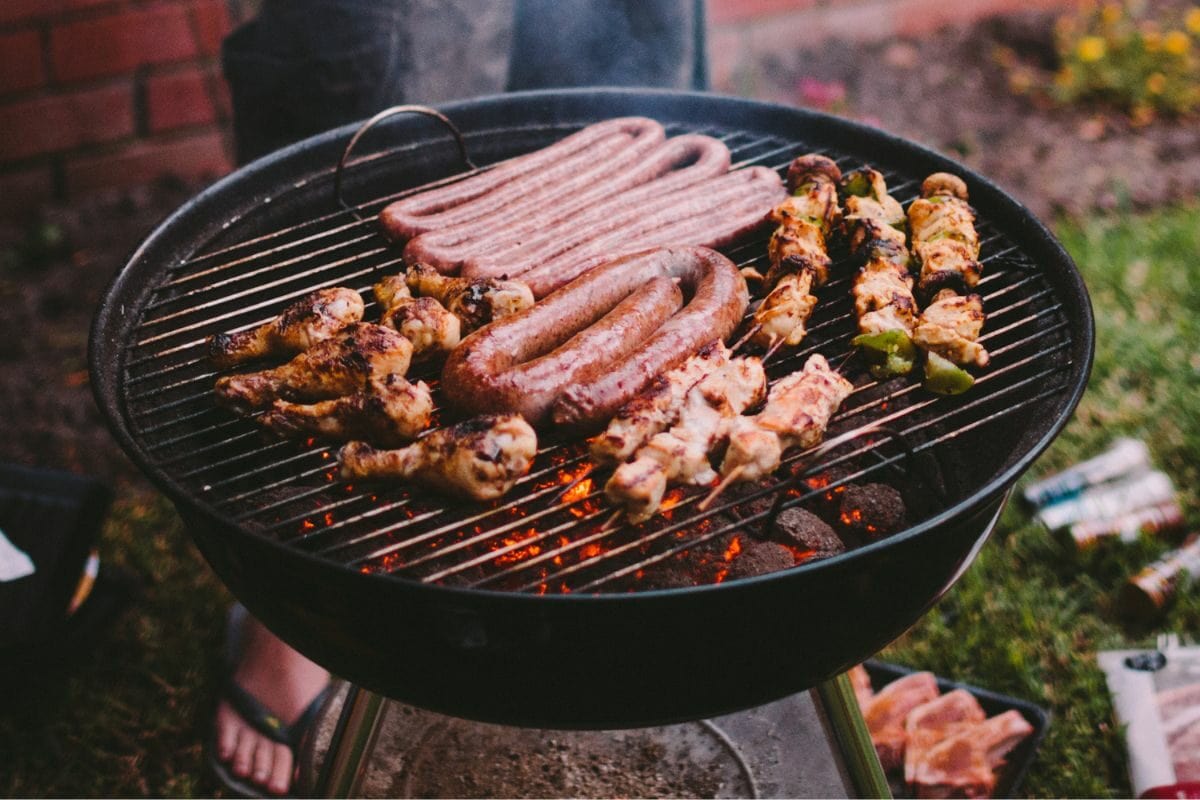
As important as grilling equipment might be for a South African braai, the success of your traditional braai hinges on spices and sauces. You should stock up on these typical spices for your South African braai barbecue event:
These spices can be used to craft delicious South African sauces that pair perfectly with braai-grilled meats and side dishes. Traditionally, traditional South African sauces include:
An essential aspect of braaiing is the use of natural, locally sourced wood instead of charcoal or gas. Typically, locals favor the wood from the camel thorn tree, also known as Kameeldoring. It ensures the wood fire and smoke burn longer, allowing for more extended periods of cooking. It’s not common in big retail stores online yet, except if you’re in South Africa. But it’s now sold in Europe and the US by vendors like BraaiwoodUK, Californian Grills, and NamibFire. But it’s not hard to find in South Africa.
Pinewood is also used for Braaing in South Africa. But I wouldn’t recommend this for several reasons.
First, this is softwood. Unlike hardwood which burns longer and moderately without excessive wood smoke taste, pinewood burns quite fast, with a thick acrid smoke, and is very flammable. It leaves your meat with too much smoke taste and can be unpleasant.
Also, it’s not safe to cook food over direct flame because it contains various chemicals and resins.
Get your buffalo meat. If you can’t find some, game meat or ostrich steaks are fine too.
Rub the meat with olive oil, salt, and freshly ground black pepper. Let it marinate for one to two hours or overnight in the fridge.
If using a traditional fire pit or fire bowl, light the wood and allow it to burn down until you have a bed of hot embers.
Place the marinated buffalo steaks on the grill grate over the hot embers. Cook the meat to your preferred level of doneness, turning occasionally for even cooking. This might take around 10-15 minutes, depending on the thickness of the meat and your desired doneness. The internal temperature recommended for buffalo steak is rare to medium. That’s around 135 to 155 degrees Fahrenheit.
In a saucepan over the fire (or a separate stove), heat a bit of olive oil. Sauté the chopped onion until translucent.
Add the minced garlic, curry powder, paprika, ground cumin, ground coriander, and chili flakes. Cook for a minute until fragrant.
Add in the diced tomatoes, diced bell pepper, and grated carrot. Cook for a few minutes until the vegetables soften.
Add the canned baked beans along with their sauce. Mix well and let the sauce simmer for about 10 minutes, allowing the flavors to meld together.
Once the buffalo meat is cooked to your liking, remove it from the grill and rest for a few minutes.
Serve the grilled buffalo meat with a generous drizzle of homemade Chakalaka sauce.
Garnish with freshly chopped cilantro leaves for a burst of freshness and color.
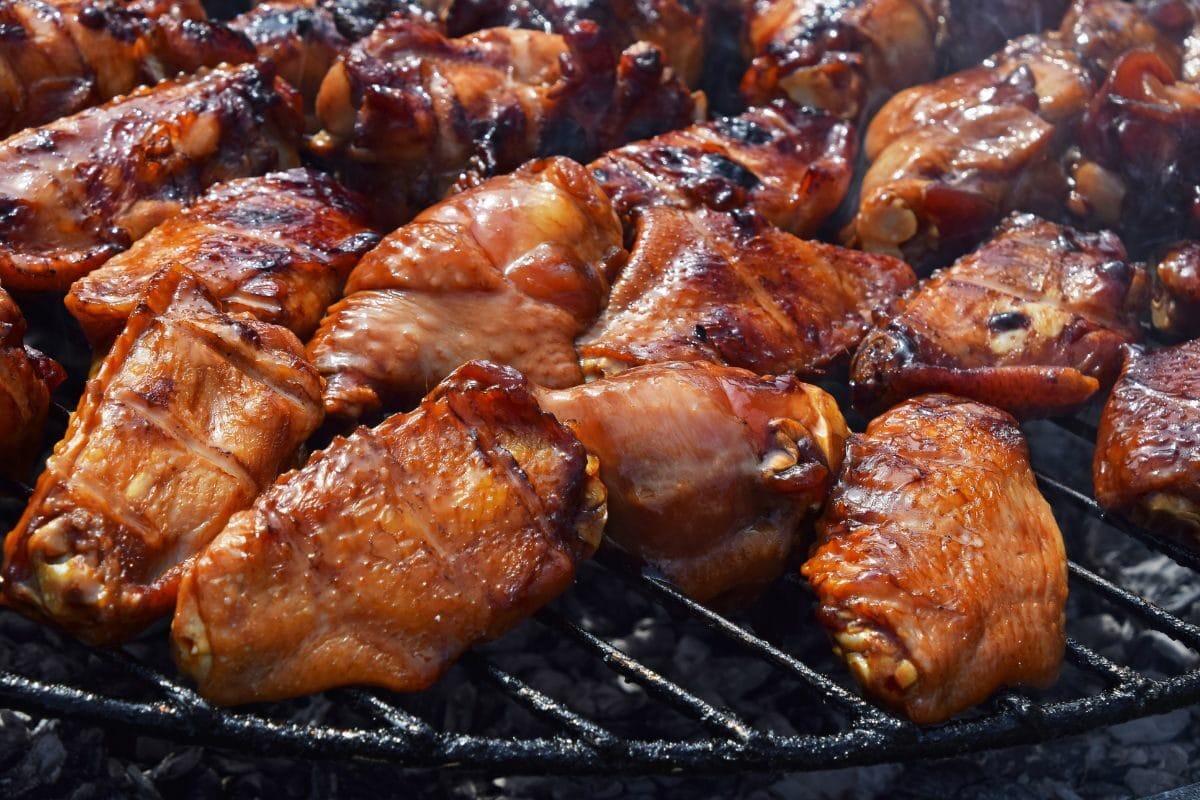
You can braai anything and everything – from lamb, beef, chicken, pork, springbok, and ostrich, to South African sausage known as boerewors.
South Africa’s culinary delights mirror the nation’s rich multicultural history. Expect a range of offerings from grilled meats and stews to sweet potatoes, and pumpkin.
On the braai grill, you can cook vegetables, fish, and various types of meat. While chicken and beef are common, you’ll also find impala (African antelope), ostrich, kudu (antelope), and even crocodile. The undeniable star of the grill, however, is the boerewors. This is a word for farmer’s sausage. It’s like the South African version of Chipolata from Europe.
For an even more tantalizing taste, marinate the braai meat using a homemade marinade for a 100% South African flavor. This can include tomato sauce, Worcestershire sauce, chutney, seasoning, vinegar (white or brown), and ginger beer.
As accompaniments, African families often savor pap, maize porridge, mashed potatoes, or yellow rice, also known as geelrys. Salads, potato casseroles, and the famed “braai bread” – a sandwich layered with cheddar cheese, onions, and tomatoes – are commonly served at a braai.
Braai events in South Africa also feature an array of snacks and grilling choices that perfectly capture the country’s culinary heritage.
At the heart of the braai experience is the boerewors – a flavorful farmers’ sausage. Boerewors, a term derived from Afrikaans, is crafted from a mixture of meat, often pure beef, coarsely ground to create a chunky texture.
The Braai master often uses saffron, pepper, salt, clove, and nutmeg to create a distinct taste. After spicing it, we form the sausage into coils and beautifully present it, adorning it with caramelized onions.
Biltong and droewors are South African culinary traditions and rightfully find their place on braai menus. Biltong is a variation of dried meat, expertly seasoned to perfection. Similarly, droewors, meaning “dry sausage,” is a mouthwatering delight from cooked and dried meat. It’s also prepared with a special blend of seasonings. Both biltong and droewors serve as ideal accompaniments for a memorable South African barbecue experience.
You’re on holiday in South Africa and suddenly invited to a typical South African braai?! Congratulations. This is a real friend request and means a lot of fun. But it can also be a bit scary because there are several do’s and don’ts that you should know in advance.
South Africans have some special traditions. They love wine, walk around barefoot, and greet each other with “Howzit bru.” Here are some more Braai etiquette and rules to consider. Take note of them, and nobody will notice that it was your first braai.
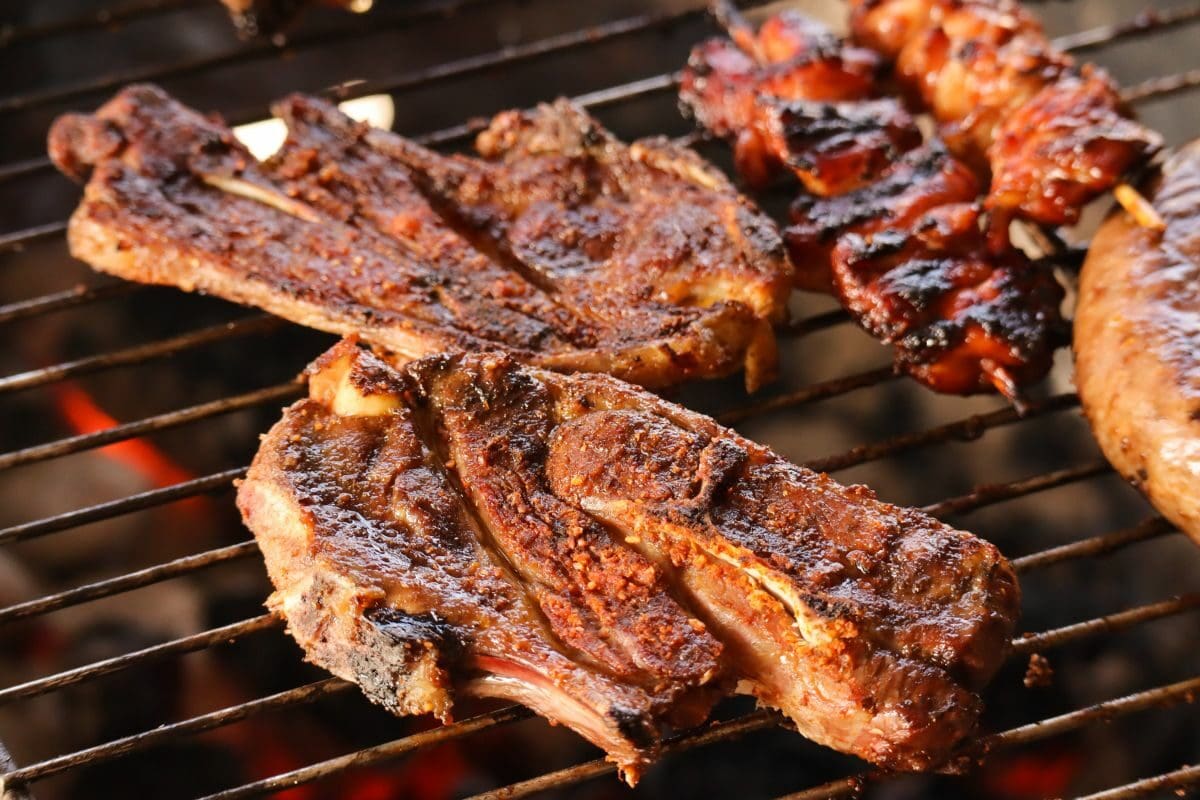
The very first rule: never equate a South African braai with a regular BBQ! In South Africa, saying those words is a big no-no. While braai is a cherished element of the South African tradition, it’s not a simple BBQ.
There are strict rules, as you can see. For example, you must never bring a gas grill to a Braai event. There’s even a dedicated day for it – the Braai Day, officially called Heritage Day – something no other barbecue can claim.
Can you really go wrong with the dress code? Not quite. Generally, the attire for a South African braai is casual (unless stated otherwise on the invitation).
Opt for comfy, relaxed clothing, and perhaps bring a sweater in case the evenings turn a bit chilly. Yes, it snows in SA sometimes and in some places in winter, typically between June and August. But you don’t have to worry about the rainy weather or snow hitting you as most South Africans Braai under a covered patio.
For most South African barbecues, the motto is “Bring what you eat!” The braai master provides the venue and equipment and does some braai, but guests must bring their own South African Braai meat and beverages.
If the invitation states “from 2 p.m.,” don’t be at the doorstep exactly at 2 p.m. You might stress the host. South African braais usually unfold during the afternoon and/or evening, allowing everyone to arrive gradually.
Here’s the local rule: grill first, then feast. Resist the urge to hover over the grill like a hungry hyena, eagerly waiting for that first skewer. In South Africa, tradition dictates waiting until everything is perfectly grilled before digging in.
Follow these guidelines, and you’ll sail through your braai experience seamlessly. No one will suspect it’s your first, even if you were initially clueless.
One key difference is that you use wood, preferably for Braai, while BBQ is possible in gas grills, wood smokers, charcoal grills, and even ovens. Also, Brai is an entire event – including the national Braai Day, a widely participated national holiday for celebrating diversity.
Some Americans (and even Australians) prefer to interchange the word Braai for barbecue. I’m not sure they’re wrong though. Braai shares many similarities with the American barbecue (even if that might not be well received in South Africa). The goal is to relish the grilling experience in a convivial ambiance with friends and family for extended hours. The Braai, like BBQ, can be referred to as the equipment for cooking meat.
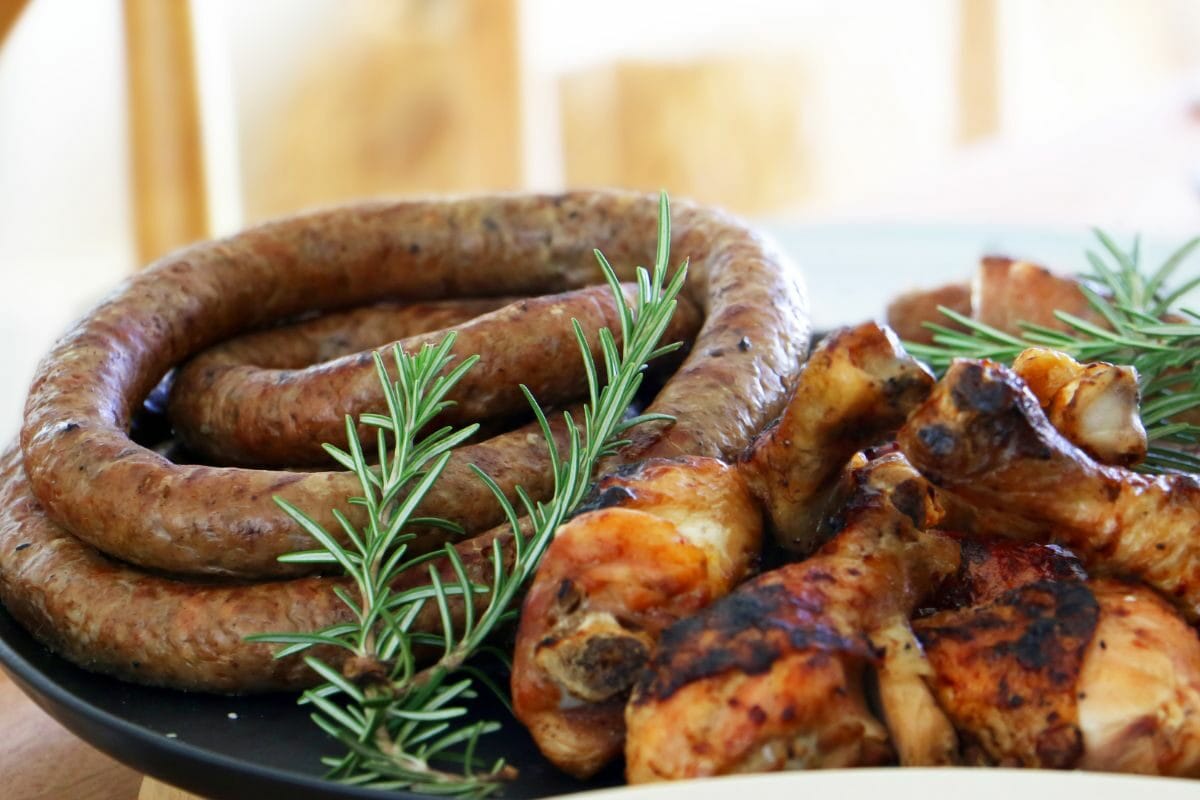
Braai is more of a lifestyle than quick food preparation. But those who engage in it will be rewarded with countless hours of “quality time” at the wood fire. The culinary options are very diverse, and the ambiance is simply wonderful.
Lamb and beef are often the most popular Braai BBQ meats in most South African households. More exotic yet equally popular options include ostrich, springbok, kudu, and buffalo. For a casual Braai, remember to bring your own meat. Sauces like chutney or chakalaka, made from traditional spices such as coriander, cardamom, cumin, ginger, or chili, are essential for accompanying these meats.
Braai appeals to adventurers and food enthusiasts who seek to explore new and delightful culinary realms. It necessitates a willingness to set aside the usual grill and embrace something novel.